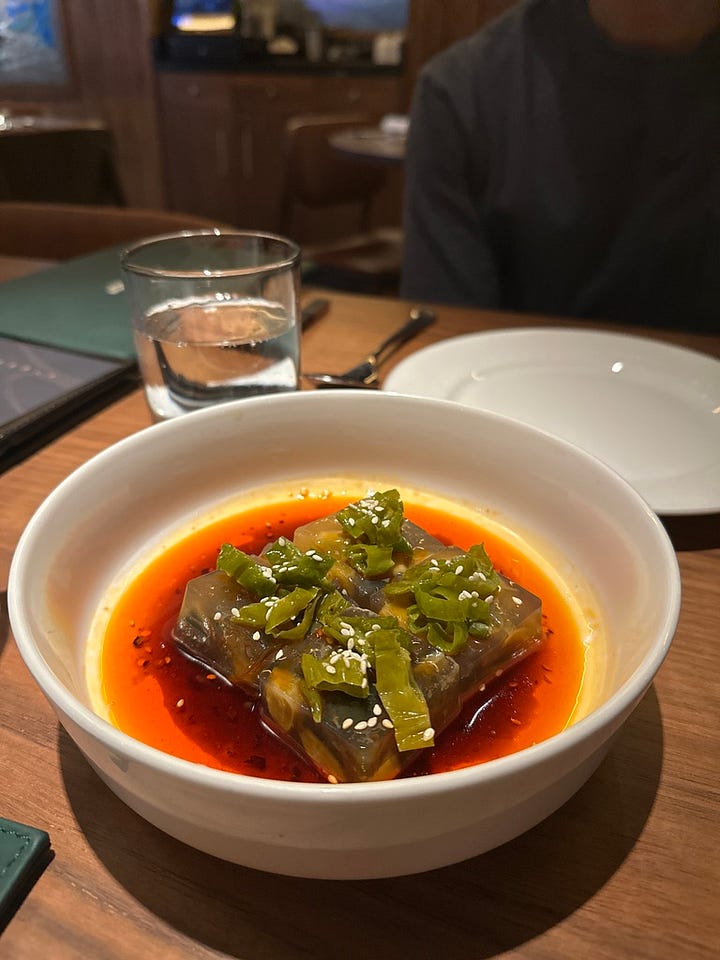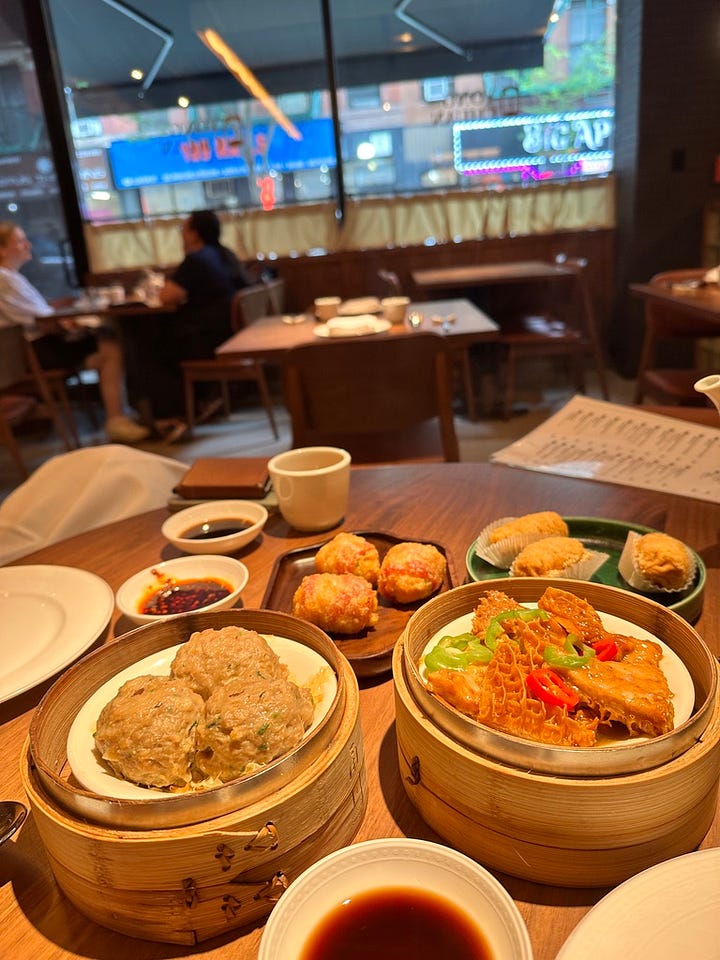How Chinese Food Became American
A story of assimilation, inheritance, and how identity is shaped.
📬 Snacks and Spirals — No. 2
A weekly dispatch from Your Hungry BFF — where food isn’t content. It’s context.
🧠 1 Question to Spiral On
Where in your work or identity have you had to dilute yourself to fit in?
📜 A History Lesson, Served Hot
How Chinese Food Became American — And Why It’s Reclaiming Itself
For decades, Chinese food in America meant egg rolls, chop suey, and fluorescent sweet‑and‑sour sauce — dishes shaped by exclusion laws, cheap rent, and white palates.
In 1882, the Chinese Exclusion Act slammed the door on most Chinese laborers and blocked any chance at citizenship for those already here. But there was one crack left open: restaurants.
By 1915, a court ruling turned that crack into a doorway — if you owned a restaurant, you could get a merchant visa.
Suddenly, cooking wasn’t just survival. It was a way back in.
So, they adapted. Flavors softened. Dishes were renamed. Sauces became sweeter. Greens were swapped for broccoli — cheaper, familiar, and less “foreign.”
Dishes like General Tso’s Chicken were created to reassure diners. Assimilation was the first recipe. It worked — sort of.
Chinese restaurants became a lifeline for immigrants and a curiosity for Americans. But in the process, centuries of regional cooking were flattened into one box labeled “Chinese food.”
Then came a new generation. Chefs like Wilson Tang (Nom Wah), Lucas Sin, and Eric Sze asked a different question:
What if we stop watering ourselves down? What if we cook the food we crave, not just the food we think will sell?
And they didn’t just bring back “real” Chinese food. They created something new — Zhejiang street snacks next to Taiwanese spaghetti, beef noodle soup tangled with Sichuan bolognese.
The shift?
From assimilation to assertion.
From “Chinese food” to “our food.”
No translation needed.
It wasn’t about recreating the past. It was about shaping the future.
Today’s wave of Chinese‑American chefs isn’t just reclaiming food — they’re rewriting it. Refusing to translate. Refusing to apologize.
The menu finally reads in their own handwriting.
💬 Bites to Chew On
I.
You can grow up eating Chinese food and still not feel “Chinese enough.”
You can know every recipe and still feel outside the culture behind it.
Cultural inheritance isn’t binary. You don’t “belong” or “not belong.”
You orbit.
II. In food and in work, we polish before we know why we shine.
The chef who masters French technique before daring to make congee.
The founder who borrows words before learning to speak their own.
Imitation keeps you safe. Ownership gives you power.
III. You’re not a fraud for moving between worlds — you’re proof they can overlap.
🥡 My Chinese Go‑To Spots in NYC
1. Yong Chuan — Lower East Side


They have an all‑you‑can‑eat dim sum for $36 a person, which is a steal. Most of it hits the mark, though I wish their salted egg yolk custard bun had that molten, oozing center. Oh well — like people, you can’t win them all.
2. Lou Yau Kee — do takeout!
Still the best Hainanese chicken rice in NYC imho. Best for takeout when you want comfort in its simplest, silkiest form. Ask for extra chillies and ginger!
3. Pinch — Soho
Not the most “authentic” spot, but gotta be honest — it’s still good. Sometimes dumplings or dan dan noodles just need to taste like a hug.
Bonus: Trader Joe’s soup dumplings. Yes, I always keep a box in the freezer. And yes — I’ve only been in America five years, but I know things, okay? 😉
Next week: The French‑Fusion Issue — where legacy can feel like a locked door, and fusion is the key we made to open it.
P.S. If you enjoyed this issue, share it with a friend, pls? + I’m always hunting for new to‑go spots in NYC — pls slide into my DMs if you have favorites I should hit!
till the next bite,
Your Hungry BFF

